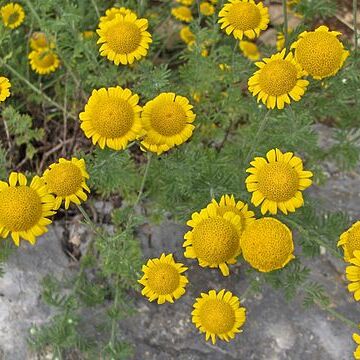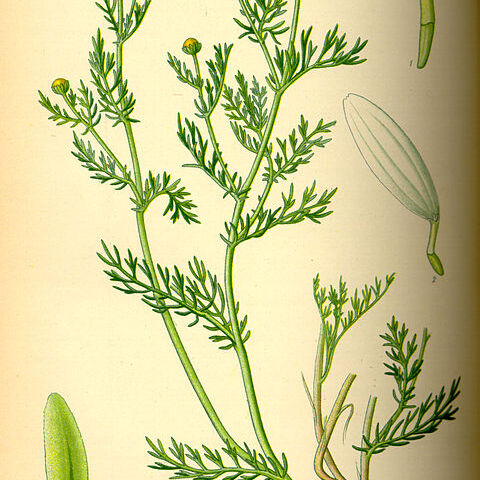Annual, biennial, or perennial herbs or sometimes subshrubs, sometimes creeping but not rhizomatous. Lvs usually 1-3-pinnatisect or pinnate and then pinnatisect, rarely not divided, alternate. Capitula usually solitary, terminal, pedunculate; involucral bracts usually in 3 rows, usually at least the inner with membranous margins. Receptacle convex or conic; scales usually present, at least on upper part of receptacle. Outer florets usually ♀, rarely sterile, usually ligulate, rarely tubular, usually white or yellow, rarely purplish; inner florets ☿, tubular. Achenes all similar, usually obconic, terete or square in section, sometimes compressed, smooth, ribbed or tuberculate, eglandular; pappus 0, or a small corona or auricle.
Annual to perennial herbs or subshrubs, erect. Leaves 1–3-pinnatisect. Capitula radiate (in Australia) or discoid, solitary or not; involucre 2-or 3-seriate, with bracts gradational in length; receptacle paleate (in Australia). Ray florets female or sterile. Disc florets bisexual; corolla mostly 5-lobed. Achenes ±homomorphic, sometimes compressed, 4-or 5-angled and/or 10-ribbed, glabrous (in Australia). Pappus present or absent. [Requires revision, may include elements of Cota]
Annual or perennial herbs or subshrubs. Leaves alternate, pinnatisect to variously lobed, occasionally entire; indument frequently of dolabriform (axe-shaped) hairs. Capitula solitary or laxly corymbose, radiate or discoid; receptacle paleate, rarely epaleate. Ray florets female or neuter; disc florets with a tube much swollen in fruit, and 5 lobes; anthers included or nearly so. Achenes usually turbinate, smooth to ribbed, thick-walled; pappus a shallow crown or absent.


